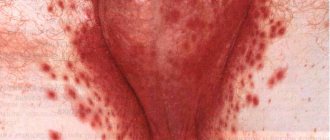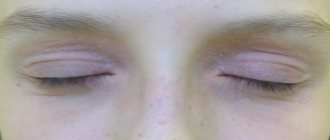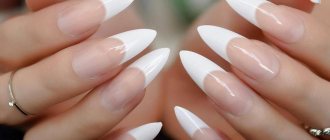Structure of facial skin
It consists of three layers.
The uppermost layer is the epidermis, which is what our daily care mainly concerns. It bears the greatest load, as it is the first line of defense against negative environmental factors. The dermis goes deeper. It is in it that fibroblasts are located, the most important cells that synthesize collagen and elastin, structural proteins that maintain elasticity and prevent the formation of wrinkles. The care products we use do not penetrate this layer; it is affected by injection techniques. Next comes the subcutaneous fatty tissue, as well as connective tissue, which contains blood vessels and nerves.
If such a problem arises, then the first thing that needs to be established is how serious it is, and to what layer the changes have reached. If it concerns only the epidermis, then you need to select the appropriate care that matches the type of skin, the season and does not cause allergies. In some cases, a complex effect may be needed that will reach the dermis. A separate conversation about genetic or acquired diseases, which can be dealt with by taking special medications and using external agents.
Why does my face peel?
The formation of any defects on the face is the body’s reaction to the influence of many irritants. This may be due to both the negative influence of the external environment and any changes in the human body.
The top layer of skin is dehydrated and group cell death occurs, which leads to their accumulation and the occurrence of unpleasant peeling. Having discovered such symptoms in yourself, you first need to identify the cause. It can be of an internal or external nature.
Main causes of dryness
The main one is the lack of moisture in the stratum corneum. It is a consequence of a decrease in barrier function due to disruption of the lipid structure. Gaps appear in the protective layers between the cells, so water is not retained.
This process may be accompanied by disturbances in sebaceous and sweating, and a deficiency of amino acids in epithelial cells, which ultimately leads to dehydration. To find out deeper and individual reasons, tests and necessary examinations are done.
Dehydration
A decrease in water content below the physiological norm causes various changes in metabolism. They can take on a different character, be of high or low severity, and this situation cannot be ignored. A change in the state of the epidermis is a clear manifestation of dehydration, but other disorders may also occur. But first of all, we pay attention to changes in appearance visible to the eye.
Peeling of facial skin, its causes and treatment is a long process, although sometimes the starting point of the disease may be the simplest. For example, the general loss of moisture in the body, which leads to a change in the water balance of all tissues. This condition has its own characteristics:
- A person feels not just dryness, but tightness.
- With dehydration, a violation of the structure of the epidermis can be expressed implicitly, however, the irregularities are clearly visible when decorative cosmetics are applied.
- Expression wrinkles on a dehydrated surface are easily smoothed out after applying a moisturizer.
Improper care for combination and oily skin
Owners of this type, in search of optimal products, choose those that contain alcohol or drying components. This leads to a hydro-lipid imbalance, and therefore causes a deterioration in the condition of the outer integument. When abrasive peelings are used in combination with such compositions, the epidermis can be injured, and then you will have to look for the answer to another question: what to do if your facial skin is peeling.
Achieving a reduction in sebum production does not mean solving the problem. It is important that there is balance and harmony in the work of the glands. After all, without lipids it is impossible to maintain hydration, especially since a dry surface is more easily injured.
Sensitive, thin skin
This epidermis is otherwise called reactive or overreactive. From the name it is clear that it responds to all existing irritants more clearly, which means that the consequences of the negative effects of the environment or allergens have to be dealt with longer and the use of individually selected means.
Congenital characteristics and natural location may be the main reason why the skin on the face peels.
Reactive epidermis is divided into groups:
- with a low barrier function, easily losing moisture;
- inflammatory type;
- neurosensitive.
It is important to remember that this feature can be the result of aggressive effects, such as sunburn. That is why protective recommendations cannot be neglected.
Freezing
Skin peeling at low temperatures is also called “cold allergy.” However, in the vast majority of cases this is hardly correct. We often notice changes due to the fact that before going outside we use moisturizing cosmetics or decorative products containing water. Moisture particles at low temperatures turn into ice crystals and injure the epidermis.
"Repurification"
Why does the skin on the face of women, men, and children peel off after washing, and how to treat it in this case? After all, it would seem that such procedures should saturate it with moisture, but the effect is often the opposite. It's all about excess cleansing:
- If you use alcohol-containing products before washing, they can dry out the epidermis, and simply washing will not be enough to restore the balance.
- Aggressive soap with an incorrectly selected pH violates the integrity of the lipid barrier.
- Trauma from scrubs and exfoliants used for home cleansing ultimately causes discomfort and tightness.
Excessive peeling
Incorrectly selected, overly active abrasive compounds can cause peeling. A slight deterioration in condition after exfoliation is within normal limits. However, severe and persistent dryness is a sign that they are being done incorrectly. After manipulation, it is recommended to apply to the face:
- fat cream;
- Panthenol;
- thermal water.
Adverse external factors
If your facial skin is very flaky, the reason may be:
- using incorrectly selected rough cleansers;
- UV rays: solar radiation penetrates to the deep layers of the dermis, including destroying collagen and elastin fibers;
- overdried, overheated indoor air, which causes dehydration of both the outer skin and mucous membranes.
Decorative cosmetics with dry texture
Mistakes when choosing make-up, as well as creams, serums and lotions, are becoming a common cause of dryness. In particular, we must remember that the abuse of products containing mineral particles, including powder, blush and shadows, can negatively affect the relief. This kind of makeup has the property of absorbing moisture and ultimately leading to dehydration, not from the inside, as in most cases, but from the outside.
Using facial products around the eyes
This delicate area is highly sensitive. It needs the closest care because it is very thin and there is no fatty tissue underneath. That is why, to avoid peeling, you need to use products designed to care for this specific area. They contain active components in high concentration.
Allergies and other diseases
If questions arise about how to remove peeling skin on the face and how to treat it, then the doctor will definitely find out if you have any allergic reactions. It is possible that the change in condition is associated with an allergy to foods, pollen, dust, or the composition of caring cosmetics. It is believed that contact dermatitis is one of the main reasons for the deterioration of the condition. We must remember that the body’s response may be slow, but it is not always possible to directly associate the manifestation of a problem with contact with a certain substance.
During the examination, the dermatologist must say exactly what kind of disease the patient has, because it can be simple contact, seborrheic or atopic dermatitis.
Rough skin on the body
Visible cosmetic imperfections on the neck, such as bumps and pimples resembling goose bumps, can really ruin a woman’s mood.
Goose bumps on the neck
Goose bumps - follicular hyperkeratosis - can appear on the neck due to hereditary factors, the skin's reaction to cold or strong emotions. In this case, this imperfection will disappear either on its own or after applying special cosmetic procedures.
The causes of the appearance of such keratinized rashes can also be:
- Imbalanced diet.
- Deficiency of vitamins A, E, C.
- Poor personal hygiene, dry skin.
Hyperkeratosis is not life-threatening, but maintaining a healthy body is necessary.
By taking preventative measures, you can solve the problem of rough skin:
- First of all, you should adhere to a properly balanced diet, include foods rich in vitamins in your diet, as well as pharmacy vitamin complexes.
- Personal hygiene should be carried out without hard washcloths. Deep cleansing of the skin in the neck area using salicylic, benzoic or trichloroacetic acids is indicated. These activities will give smoothness and elasticity to your skin.
Pilonidal dermatitis
The pathogenesis of coccygeal dermatitis suggests different causes:
- Dermatological diseases (eczema, psoriasis).
- Allergies.
- Lack of proper hygiene measures.
- Abnormal development of the coccygeal tract.
Elimination of dryness, itching, scaly skin manifestations is possible by eliminating hygiene errors; therapeutic measures should be carried out only under strict medical supervision.
Diagnosis of the causes of peeling skin on the face
You need to do some research first:
- collecting anamnesis to identify hereditary factors (many problems have a genetic basis) and characteristics of ongoing care;
- visual inspection;
- differential diagnosis to exclude diseases of internal organs and systems that lead to changes in the epidermis;
- skin allergy tests to determine the presence of specific reactions;
- bacterial sowing;
- scrapings and so on.
Based on the results, a clinical picture is obtained that the doctor uses.
Diathesis
Redness and dryness in a child are most often referred to by this term. As a rule, this is a general designation of the baby’s tendency to illness or severe reactions to products or care products.
In most cases, this is an analogue of allergic atopic dermatitis in an adult. Initially, it occurs due to errors in the mother’s diet, which affect the composition of breast milk.
When parents ask why the skin on the face peels, how to treat it and how to get rid of dryness on the body, the pediatrician prescribes treatment, and after an examination he will reveal the cause of the peeling. Recommendations will concern not only special cosmetics, but also the behavior and nutrition of the mother. In particular, you will have to exclude those dishes that cause a reaction in adults; bathing products without dyes, preservatives and fragrances are prescribed. The baby may be recommended to take the sorbent in a form that can be given to infants. It quickly removes allergens from the body and allows you to analyze which product the baby developed redness after eating.
Psoriasis
This is a chronic disease that causes patients great discomfort during exacerbations. As a rule, it manifests itself in people with a family history, but following a number of rules allows you to avoid its obvious manifestations.
Factors that provoke pathology include:
- Long-term negative impact of the environment, including sun, frost, and so on.
- The use of rough scrubs and traumatic cosmetics.
- Washing with regular soap.
- Using hair dyes that cause irritation on the scalp.
- Allergic reactions.
- Eating spicy, salty, fatty foods, as well as alcohol.
What to do to prevent the skin from peeling with psoriasis, the doctor recommends. The treatment program includes the use of hormonal drugs that cannot be purchased independently. Therapy should also include keratolytics and emollients, anti-inflammatory drugs.
Avitaminosis
The most important vitamins for the skin include:
- B1 – relieves itching and participates in the metabolism of proteins, lipids, and is responsible for the synthesis of connective tissue elements.
- B2 – improves nutrition, is part of respiratory enzymes, stimulates regeneration.
- B5 is a component of redox processes.
- Pantothenic acid – has a protective effect, relieves inflammation.
- B6 – its deficiency can be one of the main causes of flaking of the skin on the face; it is prescribed for various dermatoses.
- Folic acid - indicated for hyperkeratosis, patients with psoriasis, relieves itching.
- Nicotinic – needed in reparation processes (not prescribed during periods of sharp exacerbation of allergic reactions).
- B12 is a remedy for photodermatoses, neurodermatitis, and so on.
- H (biotin) – its deficiency is accompanied by dry skin and the appearance of scales.
Mycosis
Fungal infections occur quite regularly today, including due to weakening compliance with sanitary and hygienic standards. With these diseases, “flakes” look like small lesions, and scales also appear in the hair. The spots can be pink or red, in their center the epidermis dries out. Small areas of the lesion merge as they progress, causing serious discomfort. Sometimes hair is affected and becomes thin and brittle. Most often, infection occurs from animals.
Seborrheic dermatitis
This disease is also called eczema and is a common cause of irritation on the face. The chronic disease is characterized by inflammation, slight itching, and the skin on the cheeks begins to peel off. It is common among both adults and children, including sometimes affecting newborns.
The causes of the disease include:
- decreased immunity;
- heredity;
- changes in hormonal levels;
- stress.
As a rule, the areas of greatest damage are in the eyebrows, on the bridge of the nose and in the nasolabial folds. A doctor should determine what will help with peeling skin on the face.
Ichthyosis
With this diagnosis, the process of keratinization is disrupted. The disease is hereditary in nature, and scales appear on the surface (hence the name). Some areas thicken, while in others, on the contrary, the epidermis becomes very thin. And improper absorption of vitamin A causes keratin accumulation and hardening. In severe cases, areas of inflammation and blisters appear, and a violation of the protective barrier makes the outer skin very vulnerable to infections.
Patients with scaly dermis may also have other problems. Perhaps their thermoregulation is impaired, their metabolism is slowed down, and the activity of enzymes involved in oxidative reactions is increased. This leads to disruptions in the functioning of the endocrine system.
There is currently no treatment, since the source is genetic mutations. However, care rules must be followed: constant moisturizing of the epidermis, keratolytic therapy, and dosed ultraviolet irradiation are necessary.
How to treat peeling facial skin?
Creams
It is important to treat peeling facial skin comprehensively, under the supervision of a qualified cosmetologist. Even a moisturizer should be selected by a specialist, taking into account the characteristics of a woman’s skin.
In most cases, peeling is caused by improper skin care. Following the advice will help reduce the risk of peeling:
- Use natural cosmetics to eliminate flaking skin.
- If you wash your face with toner in the morning, be sure to moisturize your face with cream in the afternoon.
- Water for washing should be mineral.
- It is recommended to exfoliate before applying the cream.
- It is also recommended to massage your face before applying moisturizer.
Vitamins
If dry and flaky skin is caused by a lack of certain minerals or vitamins, it is important to replenish their deficiency:
- Vitamin A . With its deficiency in the skin, the process of desquamation and dehydration accelerates.
- Vitamin B3 (PP). Nicotinic acid is contained in various enzymes that are part of tissues. This substance is responsible for the metabolism of nitrogen, carbohydrates and lipids. With a significant lack of vitamin B3, pellagra (rough skin) appears, cracks appear on the integument, excessive rigidity and additional infection of the skin.
- Vitamin B6. If this vitamin is contained in insufficient quantities, amino acid metabolism deteriorates. A lack of vitamin B6 can trigger the formation of dermatitis.
- Vitamin B7 . Responsible for metabolic processes in the body and plays a major role in collagen synthesis. With a lack of this vitamin, the skin of the eyelids, wings of the nose, and chin begins to peel.
- Vitamin B2 . With a lack of this vitamin, metabolism in the tissues of the epidermis may worsen. The skin begins to dry and peel.
- Vitamin E. This element is responsible for oxidation in cells. If the body does not have enough of this microelement, toxins accelerate the drying process of the skin.
Most often, vitamin deficiency develops due to poor quality nutrition, strict diets and alcoholism. Sometimes temporary peeling of the skin occurs due to the use of certain medications.
Scrubs
It is imperative to select a scrub for flaking skin according to your skin type and pay special attention to the composition of the products.
- For oily skin, clay-based scrubs are suitable. This cleansing will free the skin of dead cells, remove excess fat, and tighten pores.
- The main scrub for dry skin should be a high-quality cream. The product moisturizes the skin. helps restore water balance, nourishes the skin with beneficial substances.
- For normal and combination skin, it is recommended to choose a gel as a scrub base. The product will help remove excess keratinized particles and complement the care with nutrition and hydration.
It is recommended to do exfoliation procedures no more than 1-2 times a week. If you cleanse your skin more often, microcracks may appear on your face, your skin will become thinner and dry out.
Homemade face masks will be an effective addition to scrubs for exfoliating your skin. Honey, banana, egg, cucumber, curd, apricot and cream masks will help cope with peeling.
And to prevent the appearance of peeling, it is important to adhere to the following rules:
- Drink up to 2 liters of water during the day. It is important that the body does not experience a lack of fluid.
- Before going outside, you need to lubricate your face with a nourishing cream that will protect your skin from negative environmental factors.
- Do not overdo it when using cosmetics.
- Be sure to replace plain soap with a special cleanser with a high fat content. It is better if this product contains a moisturizer.
- In winter, it is better to give preference to oil-based creams. It is also important to eat more fruits, vegetables and vitamins.
How to get rid of dry skin on the face and remove imperfections: how to treat peeling
Many people try to solve the problem with home remedies, recipes, or use creams that they buy in a regular store. However, descriptions and recommendations on the label are often not enough - depending on the underlying processes in the body, qualified assistance from a dermatologist, allergist or cosmetologist may be required.
As practice shows, approximately 85% of patients ask this question. To effectively cope with discomfort, a combination of anti-inflammatory and exfoliating agents is optimal. Also recently, the role of steroids in therapy has been growing. And in the presence of concomitant diseases that affect the condition of the epidermis, doctors of several specialties must work in close collaboration.
Tools Overview
It is known that health and beauty are guaranteed by competent three-step care, which includes:
- cleansing;
- toning;
- hydration.
At each stage you need to use appropriate cosmetics; this is the best combination that answers the question of what to do if the skin on your face is constantly peeling.
In therapy today, products made on the basis of placenta extract are increasingly used. One of them is the Japanese placental drug Laennec. Being a hepatoprotector and immunomodulator, it affects the state of the body's defense mechanisms, and therefore reduces the severity of allergies. It includes:
- Cytokines and peptides that provoke an immunological reaction.
- More than 36 cell growth factors.
- 18 amino acids, including essential ones, to prevent unwanted cellular oxidation and prevent the action of free radicals.
- About 100 protective enzymes and 40 vital minerals.
- Vitamins B1, B2, B6, B12, C, D, E.
- Hyaluronic acid to optimize water balance and moisture retention.
Experience has already been accumulated in the successful use of the drug in the treatment of atopic dermatitis. Cytokines included in Laennec activate cell metabolism and prevent the development of fibrosis.
Cleansing
An important stage, without which maintaining health is impossible. Timely removal of dead cells, excess sebum, cosmetics, dirt particles, and opening of pores normalize breathing and renewal of the epidermis. Let's list the main steps on what to do when the skin on your face is peeling:
- Wash your face with warm water.
- Use gentle products selected according to your skin type.
- Remove eye makeup with a special milk designed to care for delicate and sensitive areas.
- Blot rather than wipe your face.
- Use lipid-restoring drugs and formulations with hyaluronic acid.
Peeling should only be done by a cosmetologist, who will select the components specifically for individual sensitivity. Independent use of acids can become a trigger for the appearance of new “peels”.
Serums
This is one of the essential treatments for flaky skin. They contain active substances in high concentrations, and when applied to a well-cleaned surface, they work especially effectively. To moisturize, use cosmetics containing hyaluronic acid, pay attention to its shape. It is believed that from the outside it does not penetrate the epidermal barrier, but low molecular weight is most likely able to overcome it.
Creams/emulsions/balms
What to do if the skin on your face is peeling - the reasons that the doctor will find out will suggest the direction of possible therapy. And at home, you can use compounds that increase barrier properties and prevent moisture loss. Typically they contain:
- substances that form a protective film;
- probiotics;
- vitamins;
- oils
What folk remedies can be used
At home, the main principle is to do no harm, choose the softest and most gentle compositions.
For example, at home you should not use abrasive peels, but rolls that do not injure you in any way. They collect dead epidermal cells due to the content of cellulose and starch, which do not scratch or leave microcracks.
When it comes to creams, it is better to take those intended for home care. When going outside, be sure to apply sunscreen.
If we talk about masks based on fermented milk products or oils, cosmetologists recommend trying them first on the skin of your hands. All homemade cosmetics can cause an allergic reaction, which will only worsen the consequences.
Cosmetics "La-Cri" - help with flaky skin on the face!
The La-Cri series of products is designed specifically for delicate and sensitive skin prone to irritation. All products in this line are based on natural ingredients without dyes or fragrances and are suitable for long-term use.
La-Cri cleansing gel delicately cleanses and soothes flaky facial skin. Derivatives of olive and avocado oils nourish, and licorice and walnut extracts heal microcracks.
La-Cri cream helps with allergic reactions and severe peeling of the facial skin. Its main active ingredients are extracts of string, violet, avocado and walnut, which nourish the skin and promote its restoration.
Light emulsion “La-Cri” is suitable for constant care of even the most delicate skin, providing daily hydration and preventing flaking.
How to get rid of a problem from a cosmetologist
Before you go to a specialist, we recommend that you find out whether he has a license and the appropriate qualifications. Unfortunately, recently offices have often opened in which the situation can worsen: cosmetology is a branch of medicine, and conventional courses for correct diagnosis and choice of treatment are not enough.
At your appointment, a certified professional cosmetologist will recommend how to get rid of peeling skin and what procedures can be carried out for this. Among them:
- Special corrective care with cosmetics that penetrate the epidermal barrier.
- Paraffin therapy – liquid warm paraffin creates a greenhouse effect that helps moisturize the skin.
- Biorevitalization is an injection technique for introducing preparations based on hyaluronic acid into the upper layers.
- Gentle acid peeling, which is indicated when the cause of dryness is not a serious systemic disease.
Roughness and signs of disease
The above reasons can serve as a catalyst for dermatological diseases, which is indicated by your face. An insufficient amount of moisture in the upper layers of the epidermis can cause dryness and flaking also on the back and limbs.
Xerosis
If the skin has become rough and changed color, if peeling, itching, and cracks appear and persist for a long time, you should think that this is not a simple cosmetic defect. This condition can be caused by xerosis, a symptomatic manifestation of a skin disease that should only be treated by a specialist.
Xerosis is caused by a special physiological condition of the skin with insufficient function of the sebaceous glands, characteristic, for example, of women with thin white skin, as well as during menopause.
Atopy
Roughness can appear due to the use of chlorinated water, washing powders, soap and other more or less aggressive environments. This can cause a chronic disease such as atopic dermatitis, a type of eczema. It is typical for people with sensitive immune systems and hereditary predisposition.
Dermatitis is manifested by the following symptoms:
- Uneven rough skin, itching, dryness, rash.
- The reddish rash is localized in small areas of the skin of the face, neck, limbs, and also on the back.
- In the initial stage, the itching is insignificant, but dry skin is flaky and prone to cracks, which can later become infected.
Atopic dermatitis is especially common among young children and also occurs in adults.
Preventive measures include washing the body with non-chlorinated water (preferably boiled), using gloves when cleaning and washing, using moisturizing creams (Emolium) and lotions. In severe cases, medications prescribed by a doctor are used.
Systemic diseases
Problems with the endocrine and lymphatic systems can also cause changes in the skin and subcutaneous tissue. Decreased thyroid function, especially in severe hypothyroidism, causes mucinous edema (myxedema), most pronounced in connective tissue structures.
The patient experiences dry, rough and pale skin, swelling of the face and limbs, fragility and hair loss. In this case, consultation and treatment with an endocrinologist is necessary.
Avitaminosis
Roughness and roughness of the skin on the face may be a sign of vitamin deficiency, in particular, a lack of niacin (other names for vitamin B3 or PP). Niacin, or nicotinic acid, is the only vitamin that traditional medicine classifies as a medicine. A lack of niacin in the body can cause a disease called pellagra.
Niacin is easily absorbed in the body, but in case of digestive disorders, prolonged fasting, or poor nutrition, there is a deficiency of nicotinic acid or the amino acid tryptophan, which promotes the production of the vitamin.
The disease mainly affects adults. Pellagra is characterized by:
- Peeling and pigmentation of the skin under the influence of light, especially in spring and summer.
- Red spots appear on exposed parts of the body, the affected skin is swollen and itchy.
- Pityriasis-like peeling occurs, the skin of the face, hands, and also the skin on the neck becomes dry, reminiscent of parchment.
- Pellagritic erythema is characterized by dark brown pigmentation, in some cases white spots appear, similar to vitiligo.
Niacin is often called the vitamin of calm; if it is deficient in the body, the functions of the central nervous system are disrupted, and in severe cases, pellagrotic psychosis develops.
Treatment is carried out in a hospital setting.
Balanced nutrition as a means of combating
A calculated diet is one of the important conditions for maintaining beautiful and healthy skin. It should be enriched with fish dishes that contain omega-3 fatty acids, as well as vegetable oils.
Avocado contains beneficial components; it helps retain moisture in the epidermis. The condition is improved by substances found in greens and green vegetables. The nutritional components contained in eggs have a beneficial effect: amino acids, vitamins, folic acid.
Laennec drug and super-thin injection needles Nanoneedle
Laennec - injection solution No. 10
Curacen / Curacen
Nanoneedles with ultra-thin walls 30G
Nanoneedles with ultra-thin walls 33G
Preventive actions
Proper nutrition and a healthy lifestyle are important steps to maintain youthful and beautiful skin and avoid diseases:
- Include foods rich in niacin in your diet: brewer's yeast, nuts, rose hips, liver, fish, milk, eggs.
- Let fresh parsley and celery be a constant green addition to your dishes.
- Vitamins A and E are found in vegetables and fruits with yellow, orange and red colors.
- Avoid sweet soda, fatty and spicy foods.
- Do not aggravate dry skin by frequent visits to the solarium.
The smoothness of the skin is maintained by scrubbing. You can make a scrub from sea salt or coffee grounds, or purchase a ready-made cosmetic product. Masks and creams will help remove peeling.
Let's sum it up
If you experience symptoms of deterioration in the condition of the outer skin, including redness and itching, we recommend that you consult a doctor without delaying. Make an appointment with a dermatologist, dermatovenerologist, cosmetologist (beauty salon specialists do not always have higher education, so we advise you to make an appointment at the clinic). The sooner a specialist determines the reasons for the change, the faster adequate treatment will be selected, relapse prevention will be provided, and the question of how to get rid of peeling on the skin will be answered.
Moisturizing and nourishing the face at home
After cleansing procedures, our skin requires mandatory hydration and nutrition. Masks, tonics and special creams can handle this:
- One banana needs to be mashed and mixed with a spoon of olive oil. Keep for 15–20 minutes.
- Mix cottage cheese, sugar, milk and olive oil in equal parts. Leave for 5 minutes and rinse with water.
- To a teaspoon of oatmeal, add a spoonful of grated carrots and an yolk, apply the resulting mixture to your face, and rinse off after 15 minutes. This mask will ease irritation and reduce peeling.
- 1 tbsp. l. Pour hot water over flaxseed and cook over low heat until slightly thickened. Apply the cooled, slightly warm mixture to your face and leave for 15 minutes.
- Take sour cream with a high percentage of fat and dilute it with parsley juice. Apply this mixture to your face and leave for 15–20 minutes.
- You can also use regular cucumber juice. It tones and moisturizes the skin.
- Any vegetable oils are perfect: flaxseed, sesame, peach, etc.
If home treatment does not bring positive results, you should seek the help of a cosmetologist and dermatologist.
Consult a doctor! He will identify the cause and prescribe treatment.











